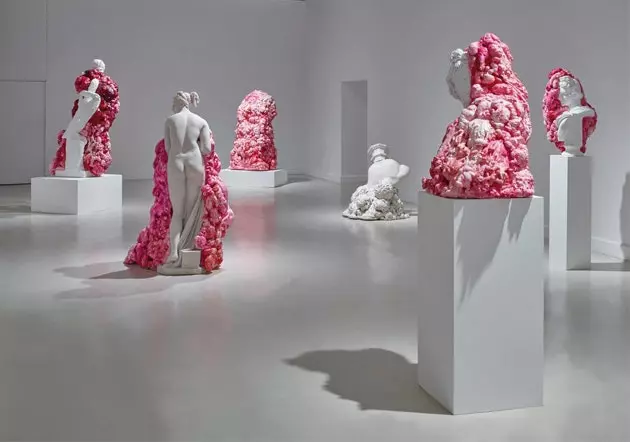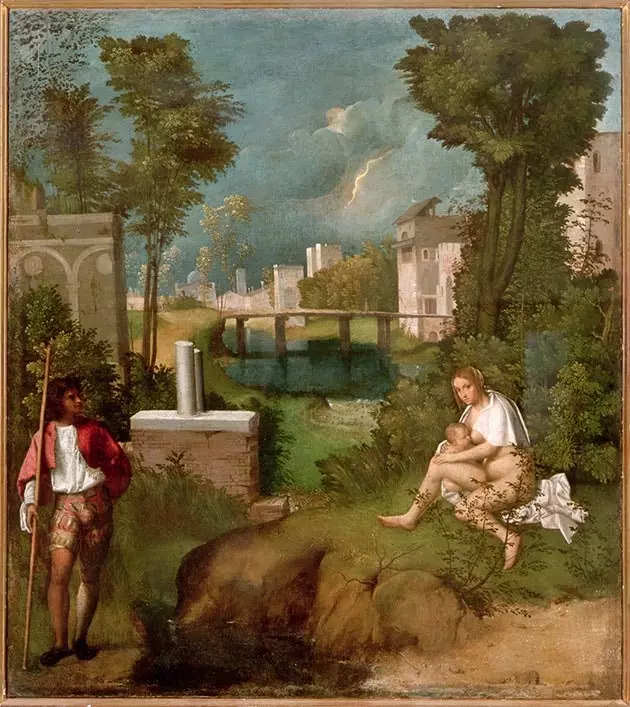
Florence, the 'Stendhal' city par excellence
Stendhal, the well-known French writer of the 19th century, wrote in his book Rome, Naples and Florence: "I had reached that point of emotion where celestial sensations given by the Fine Arts and passionate feelings meet. Leaving Santa Croce , my heart was beating, life was exhausted in me, I was afraid of falling ".
Years later, this description served the psychiatrist and psychoanalyst Graziella Magherini to coin the Stendhal Syndrome, which comprised the set of reactions observed by her in tourists visiting beautiful Florence . According to her, she collected, this includes the symptoms that we have just mentioned. But is that even possible?
Enrique Pallarés Molíns, Doctor in Psychology and Professor Emeritus at the University of Deusto, is not so clear: "First of all, it is necessary to clarify that it is not a new mental disorder , specific and defined, such as depression or schizophrenia. It has not been recognized as such neither included in the extensive classification of mental disorders of the American Psychiatric Association (DSM-5 or earlier editions) nor in the International Classification of Diseases of the World Health Organization (ICD-10), nor in any of the other main databases of data".
"Furthermore -he continues in his article on the subject of Pallarés-, Magherini's study has received several critical remarks. The hundred cases collected during the aforementioned period would have to be compare it quantitatively with the high number of tourists who visited Florence during those same years, in order to calculate the relative impact of the syndrome. Likewise, a complete epidemiological study, and the very consistency of the syndrome, would require the comparison of the cases observed in Florence with those that occurred in other museums or privileged places in terms of the concentration of artistic works or historical memories".

The David Syndrome, derived from Stendhal's, encompasses the reactions to this work
TEST YOURSELF
However, as we have noted, That does not mean that you have not or cannot experience the Syndrome (or something like it...) Shall we prove it with four little questions?
- When you listen to Mozart's _ Little Nocturnal Serenade _...
**a) ** Your bilirubin goes up: you feel like you could conquer, say, Poland
**b) ** You think it's not bad for a movie soundtrack
**c) ** Are you talking about the Mozart that hits Skrillex in the mouth?
- You've been to the Galeri degli Uffizi and...
**a) ** I got tremors as soon as I passed the door. That beauty!
**b) ** I have not been, but I would like to!
**c) ** Too many statues for my liking
- When you stood in front of Notre Dame...
**a)** I couldn't believe it. I was stoned
**b) ** I took a photo for Instagram and continued on my way
**c) ** I remembered that Esmeralda and Hunchback didn't end up together
- Your visit to the Prado seemed...
**a) ** A joy. He could barely get a word out.
**b) ** Actually I didn't stop too much to see anything, there were a lot of people
**c) ** I already saw all the paintings in the school books; it's not that bad
Majority of a) : Friend, if you have not already felt Stendhal Syndrome, you are a firm candidate to suffer from its most serious symptoms. But art with taste does not sting!
**Most of b) ** You have not suffered from the Syndrome, but it could happen if the right circumstances ever arise. Do not lose hope!
** Most of c) ** Stendhal and his nonsense matter rather little to you, and it is highly unlikely that you will be enthralled by a work of art considered "classic" (which does not mean that you do not fall for others kinds of creativity...)

Detail of the Marina Vargas exhibition at CAC Málaga
WE WANT MORE STENDHAL
What result have you obtained? Not convinced? We continue our Stendhalian investigation.
We have spoken with Fernando Francés, director of the famous ** Malaga Contemporary Art Center ** (Marina Abramovic, Tracy Emin, Damian Hirst, Julian Opie, Kaws, Ai Weiwei, Obey... have exhibited there) to see if the Syndrome can also take place in other latitudes and with another type of art, contemporary . Wouldn't that be a good test to prove its existence? "In the CAC there have been cases, quite a few. The last one was last week and starred the artist Marina Vargas, who was moved to see her work exhibited in the museum. I have seen visitors cry at the CAC Málaga in individual exhibitions of artists as different as Ron Mueck, Jack & Dinos Chapman, Louise Bourgeois or Luc Tuymans", he tells us.
"Undoubtedly, there is a possibility that the visitor might feel some strong emotions before beauty , of any kind. It may happen that before great stages or great works, the very magnitude that surrounds the individual, is more propitious for this emotional syndrome to occur. Also fatigue, temperature, dehydration, hunger, etc. that can be frequent in the tourist and in the traveler, they can accentuate those sensations. If it does not become a pathology, it is welcome", explains the curator, who has witnessed something similar to this Syndrome in the Altamira Caves. "I would not speak in this case of the Florence Syndrome, but of Altamira syndrome , because there the sensations of temperature, antiquity, claustrophobia and magnetism are unparalleled".
Pallarés agrees with this last qualification, and agrees that the personal circumstances of the traveler (schedule, meals...) can affect the incidence of the Syndrome. "In the cases that Magherini cites in his book, these antecedents are alluded to, but without evaluating, or at least estimating, their causal influence on the observed psychosomatic and mental disturbances."
In another article, the psychologist explores this aspect even further: "Stendhal's own story provides some clues about the presence of other factors that influenced the intense emotional reaction he describes . Stendhal arrived in Florence in a stagecoach, after a journey of several hours, without any rest. Just arriving, he headed for the Basilica of Santa Croce by the shortest route. The position he had to adopt to contemplate the vault he can also explain anywhere in the psychosomatic reactions he describes. On the other hand, the data of his biography indicate that Stendhal had physical problems to which the symptoms he recounts in his diary can be related." That, of course, without forgetting that it was about a fictional story.

Cave of the Stalactites in the Altamira Museum
However, Pallarés does not rule out the existence of positive symptoms related to the experience of artistic ecstasy "and not so much to an exclusively pathological reaction or disturbance." French, indeed, also places greater emphasis on the positive part of this fascination, which he himself claims to have felt : "The first time was at the Academy before Giorgione's The Tempest. The visit was at night, after a whole day walking through the Venice Biennale, and it was alone. No one else was there before that painting, a classic work. The second time, it was before the video on two screens Soliloquy, by Shirin Neshat, in the Global Art Rheinland collective in a absolutely packed Ludwig Museum".
So are we to conclude that Stendhal Syndrome is, more than a pathology, a subjective experience of the traveler ? Everything seems to point to yes: " A study published in the Rivista di Psichiatria concludes that There is no evidence to consider Stendhal Syndrome as a specific psychopathological disorder. . Moreover, he points out that the brain areas involved in emotional reactions in general are or can also be activated during the contemplation of artistic works. Therefore, it is impossible, or very difficult, to distinguish, with the help of neuropsychology, the emotional aesthetic impact of a work of art from the impact of other emotional stimuli", summarizes Dr. Pallarés.

Giorgione's 'The Tempest', a vision that could change your life
*You may also like...
- The Venice syndrome or how the Venetians are disappearing from their city - From Florence to Jerusalem: cities that produce syndromes - The 'I leave everything' syndrome - 30 traits that define the inveterate traveler - Florence in ten steps and without the Uffizi - Florence on the other side of the Arno: it is mandatory to cross the Ponte Vecchio - All articles by Marta Sader
